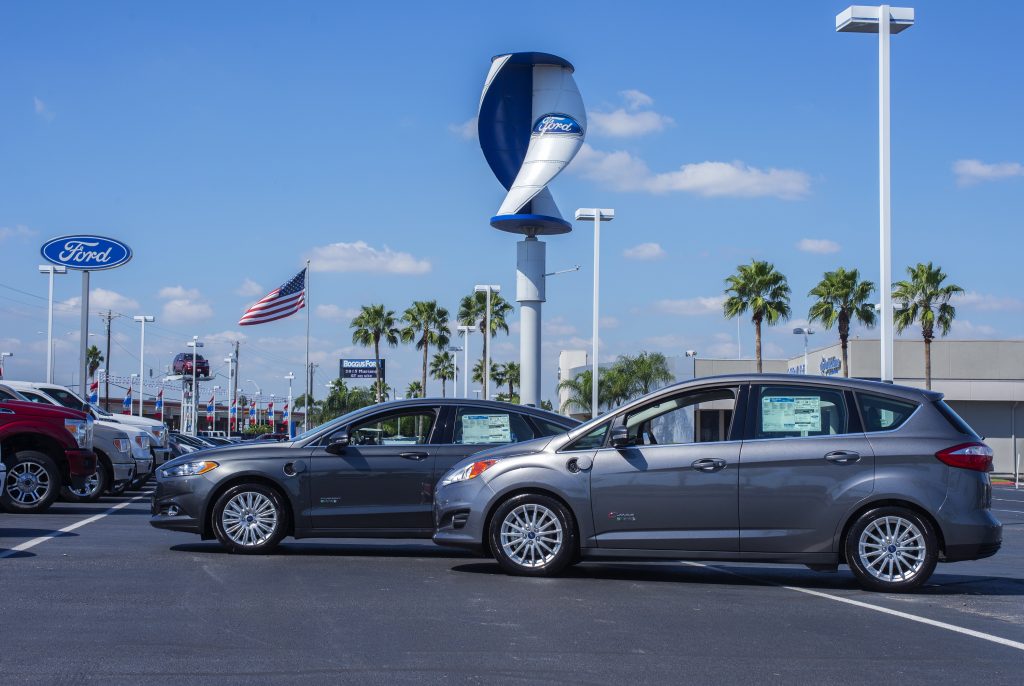Ford is rolling out advanced global inventory and demand management tools in pursuit of greater efficiency in logistics and service
Increasing inventory retention and expanding delivery across Ford’s current and targeted customer base depends on effective supply chain management, from parts procurement to distribution. That means buying parts across the huge and complex scope of Ford’s global supplier base, managing hundreds of thousands of new part numbers every year, and trying to forecast demand based on both a huge store of historic data, as well as anticipating customers whose needs and behaviours are changing fast.
Part of the Ford Customer Service Division’s response has been to adjust its organisation to take better advantage of the carmaker’s global scale, including the use of platforms across markets and continents. For example, depending on the lead engineering country for a particular model, FCSD’s regional teams engage closely with production and purchasing colleagues to make sure parts are bought from suppliers with a view for the entire lifecycle of a vehicle, not just its assembly.
Such planning is particularly important if supplier capacity constraints should arise; it can be difficult to get priority for a relatively small supply of spare parts compared to huge orders for vehicles in serial production. Added to that dimension is the fact that some suppliers are also serving other OEMs and supporting their own independent brands in the distribution of aftermarket parts.
“It is a tremendous challenge, and that is why it is important to optimise the full lifecycle of the parts when we work together with our suppliers, not just the factory parts,” says Toney. “I’m pleased that we are seeing a greater awareness from our supply base and a greater understanding, because they see a good business opportunity in working with us.
“But it is up to us to continue to find ways for incremental opportunities on both sides,” he adds.
One system to guide them
Global platforms and products also mean more shared part numbers across markets. That depends on a clear view of inventory location and demand, which Ford can then shift to different locations when necessary.
To do that requires advanced global inventory and demand management tools. Ford, like other carmakers, has varying levels of parts sales data history and accuracy between its more established markets in the US and Europe as compared to recently developed markets like India or China. However, the company has made advances thanks to the ongoing rollout of a global SAP system to cover service parts planning and purchasing, a warehouse management system (WMS) and distribution to dealers. Currently the systems have been rolled out in the US and Europe, while implementation is still to come across the other regions.

“We have just completed installing the WMS, the inventory management and a commercial system,” says Frederiek Toney. “We have also put in a purchasing system all around the world. As we do those things, information replaces dollars, and helps us to become leaner.”
The systems are part of an SAP suite of offerings that, while available off the shelf, has been highly customised around Ford’s service parts business. The OEM is rolling out the system in stages, with some adaptations to local needs. In Europe, for example, it uses SAP to run retail inventory management (which Ford calls ‘Sprint’), whereby the company directly controls the inventory that dealers stock on their shelves. Aspects of this control have also been rolled out in other regions, such as in China and Asia, specifically for the premium Lincoln brand that it launched in the region in 2014.
In the US, Ford takes a different approach, recommending inventory stocking levels to dealers based on a goal of achieving 95% off-the-shelf parts availability for walk-up customers. “We do that by looking at the dealers’ markets to determine the vehicles that are on the road in the primary area,” Toney says.
Although these approaches differ, they are based on aggregating and analysing current and historical data to determine forecasts for individual parts. Toney says there have already been impressive improvements where the systems have largely been completed in the US and Europe. “The more we update our information systems and get connected to what dealers are selling, the more accurate we can forecast,” he says.
He admits, however, that there is still a long way to go, especially in newly developed markets where buying patterns are more difficult to establish, and the full system is still being implemented.
The next step may well come in more advanced analytics and ‘big data’. Just over a year ago, Ford appointed Paul Ballew as global chief data and analytics officer, charged with leading the collection and analysis of information across the company. The analytics organisation has recently started to work with FCSD to improve on its more traditional forecasting methods. “To be frank, we are just getting going, but we think the project has great potential,” he says.
Toney is humble about how Ford’s current forecasting stacks up against the rest of the industry, and is reluctant to call it ‘best-in-class’ just yet. “I don’t know anyone who would say they are where they want to be yet,” admits Toney. “But we are light years from where we were, and we are trending upwards in terms of forecasting more accurately.”
Holding out a helping hand
Even as new IT systems help improve forecasting, technology on its own is not going to meet all of Ford’s goals for expanding and improving service. In some cases, increasing inventory levels or adding warehouses is essential. Toney points to the Middle East and Africa, where Ford has just two PDCs, as a region where it will likely need more space in the near future.
 Ford’s SAP system is being rolled out in stages and adapted to regional requirements
Ford’s SAP system is being rolled out in stages and adapted to regional requirementsEven in the US, where Ford’s network is most developed, dealers are extremely savvy about their market, and Ford has the most data on which to base forecasts, many dealers still need help in managing their stock supply. FCDS even offers training on request to help dealers become leaner.
“It is an investment on our part, but it helps the dealers to provide better services,” he says.
Such training will become more important, especially in emerging markets, where inventory management is less advanced. “We still have too much volatility in ordering patterns, with big spikes in orders that end up putting things on the shelf that are not being sold,” he says. “We need to work more closely in these markets so that [dealers] can educate us, and allow us to serve them better.”
Ford part 1: Always looking ahead
- 1
- 2
- 3
 Currently reading
Currently readingFord part 3: Supply chain upgrades
- 4

























![Global[1]](https://d3n5uof8vony13.cloudfront.net/Pictures/web/a/d/s/global1_726550.svgz)












